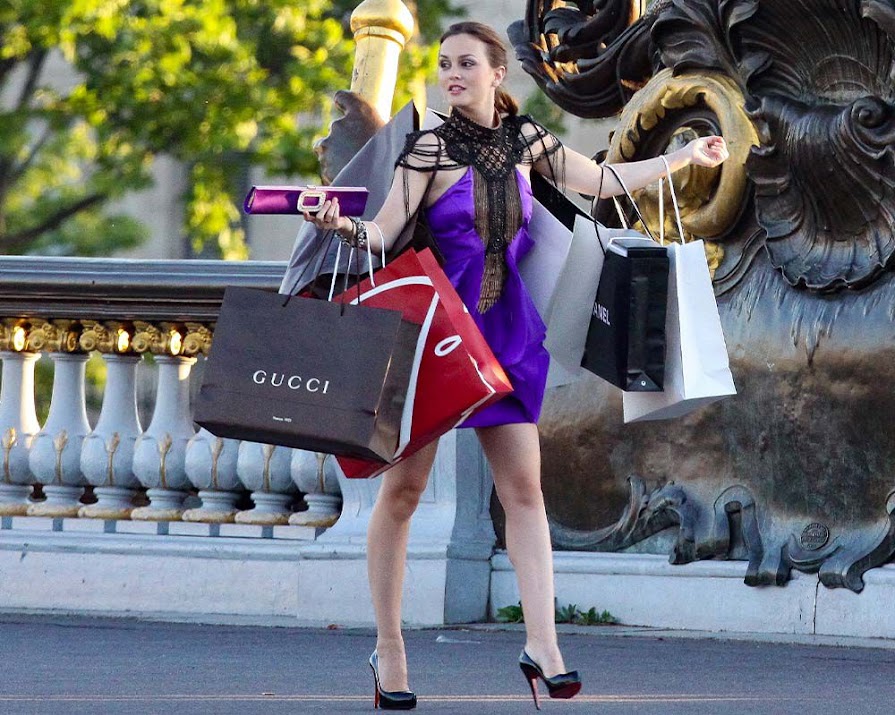As consumerism continues to dominate much of American life, a new trend is emerging that challenges the traditional notion of more is better. The underconsumption movement, now gaining traction on social media platforms like TikTok, is centered on the idea that less can indeed be more. Unlike conventional influencers who promote an endless stream of new products, underconsumption advocates emphasize sustainability, intentionality, and a simplified lifestyle built on long-term use of fewer items.
This shift, known as “underconsumption core,” is gaining momentum. Those who subscribe to this lifestyle share stories of using well-loved, durable goods — whether it’s towels passed down through generations or furniture sourced from thrift stores — and rejecting the constant cycle of upgrades and new purchases. For many, it’s about rejecting the pervasive consumer culture that has led to overstuffed homes and unsustainable lifestyles.
Megan Doherty Bea, an assistant professor of consumer science at the University of Wisconsin-Madison, explains the appeal of underconsumption as a reaction to the pressure of endless buying. “It’s about challenging the belief that happiness requires continuous consumption,” Bea says. The movement represents a fundamental shift in how people think about their possessions and what they truly need to lead satisfying lives.
Online searches for “underconsumption core” have exploded in recent months, with a 4,250% increase, according to Google Trends. On TikTok, videos showcasing the underconsumption lifestyle often go viral, racking up hundreds of thousands of likes. These posts, featuring modest collections of clothing, makeup, or household items, resonate with a growing number of users who are disillusioned with the endless stream of consumerism-driven content.
But the appeal of underconsumption goes beyond financial prudence. It’s also about pushing back against a culture that has turned consumption into a form of identity. Many supporters of this trend are driven by concerns about the environment and the overproduction of goods. The waste generated by the fashion industry, in particular, has become a flashpoint for advocates of underconsumption. Rather than participating in fast fashion, some individuals are opting to buy fewer, higher-quality items that they know will last longer.
Economically, the movement is gaining steam at a time when inflation and rising interest rates are causing consumers to rethink their spending habits. During the pandemic, when people were confined to their homes, spending on goods soared. Now, as lockdowns have ended and inflation has risen, many are reassessing their relationship with material goods. Underconsumption core offers an appealing alternative to the status quo, one that prioritizes financial stability and a more thoughtful approach to living.
Diana Wiebe, a 30-year-old TikToker from Ohio, has made a name for herself by posting “de-influencing” videos. With over 200,000 followers, she critiques influencers who push products that she sees as unnecessary and wasteful. “A lot of what they promote is just garbage,” Wiebe says. Her followers, who have embraced her critical lens, often express gratitude for helping them avoid falling into the trap of mindless spending.
Retailers are already feeling the effects of this shift. Stores like Kohl’s and Best Buy have reported declines in consumer spending, a stark contrast to the surge in buying during the height of the pandemic. The days of panic-buying bread makers and exercise equipment may be over, as more people focus on reducing their consumption.
The environmental aspect is also central to this movement. Eleanor, a 24-year-old living in Utah, says she has become more conscious of her purchases after witnessing the waste caused by fast fashion. Now, she prefers to buy fewer, more durable items, even if they cost more upfront. “I’d rather invest in a couple of quality pieces that last for years than buy 20 cheap swimsuits,” she explains, citing the environmental damage caused by disposable fashion.
However, not everyone agrees that underconsumption is the right path for all. Some argue that retail therapy can have positive effects on mental well-being. Suzanne Lambert, a consultant from Virginia, believes that the movement’s emphasis on reducing consumption can be limiting. “There’s no one-size-fits-all solution to how we should spend our money,” she says. Similarly, Scott Rick, a professor of marketing, notes that shopping can provide emotional benefits for some people. “For some, shopping offers a sense of control and satisfaction,” he says.
Ultimately, underconsumption core is about personal choice and rethinking how we relate to the material world. Whether motivated by environmental concerns, financial prudence, or a desire for simplicity, more Americans are finding that living with less can lead to greater satisfaction and peace of mind. As the movement grows, it signals a broader reevaluation of what it means to live well in a society that has long equated success with consumption.











